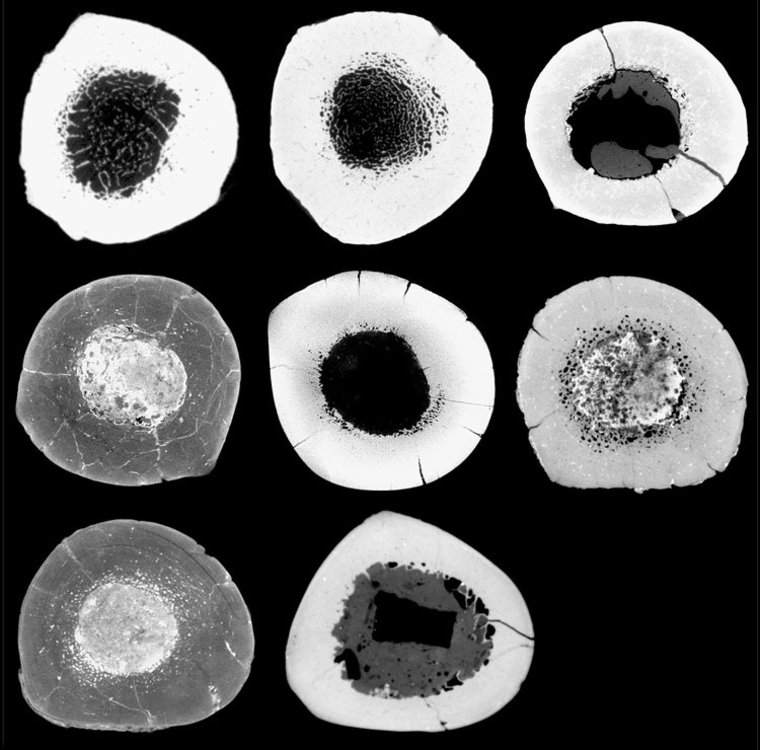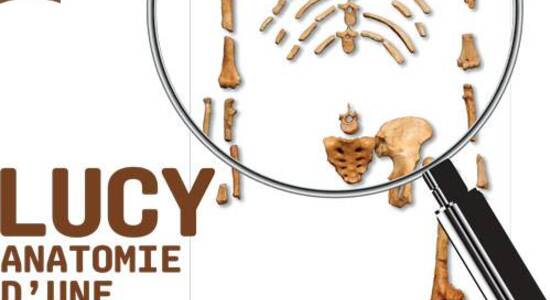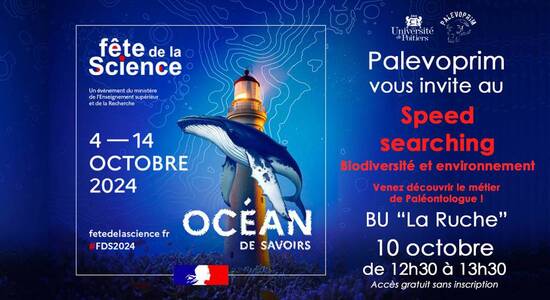Publication Journal of Mammalian Evolution
Publié par Laboratoire PALEVOPRIM, le 15 mars 2021 1.6k
Paleoecological Inferences from Long Bone Microanatomical Specializations in Hippopotamoidea (Mammalia, Artiodactyla)
Hippopotamoids are herbivorous mammals that originated in the late middle Eocene. This taxon includes animals with a great variety of sizes and body proportions, from small and gracile forms with slender limbs to heavy massive ones. Many hippopotamoids have previously been considered semi-aquatic but recent studies have highlighted a diversity of ecologies. This study focuses on bone microanatomy, one of the various proxies that enable inferring the ecology of extinct taxa. The comparative analysis of the inner structure of the stylopod bones in various hippopotamoids, based on both transverse and longitudinal virtual sections, highlights a diversity of patterns and clarifies previously proposed hypotheses about the ecology of the sampled hippopotamoids. The filling of the medullary area by spongious deposits in the pygmy hippopotamus, Choeropsis liberiensis, appears associated with frequent incursions into the water by an animal that essentially forages in forests. The common hippopotamus, Hippopotamus amphibius, which spends most of the day submerged in water, shows a greater filling of the medullary area by spongious bone and a thicker cortex. These observations coupled with comparisons with diverse terrestrial and semi-aquatic mammals of various sizes confirm that semi-aquatic lifestyle and heavy weight-bearing are associated with similar microanatomical specializations causing an increase in bone mass. However, for a given mass, comparisons enable determining if an additional increase in bone compactness occurs, as in Hippopotamus amphibius, in which case a semi-aquatic lifestyle could be inferred. Accordingly, this study suggests an essentially terrestrial lifestyle for Microbunodon minimum, Bothriodon velaunus, Elomeryx borbonicus, Merycopotamus medioximus, Paenanthracotherium bergeri, and probably also Saotherium cf. S. mingoz, a slight degree of water dependence in Brachyodus onoideus, and a stronger one in Libycosaurus bahri and Hexaprotodon garyam, though less intense than in Hippopotamus amphibius. Comparisons with other large terrestrial and semi-aquatic taxa, and based on a large part of the diaphysis, are required to better decipher the microanatomical changes associated with a semi-aquatic lifestyle from those linked to loading in heavy quadrupedal mammals.
Références
Alexandra Houssaye, Florian Martin, Jean‑Renaud Boisserie, Fabrice Lihoreau – Paleoecological Inferences from Long Bone Microanatomical Specializations in Hippopotamoidea (Mammalia, Artiodactyla) – J Mammal Evol (2021) – https://doi.org/10.1007/s10914...




